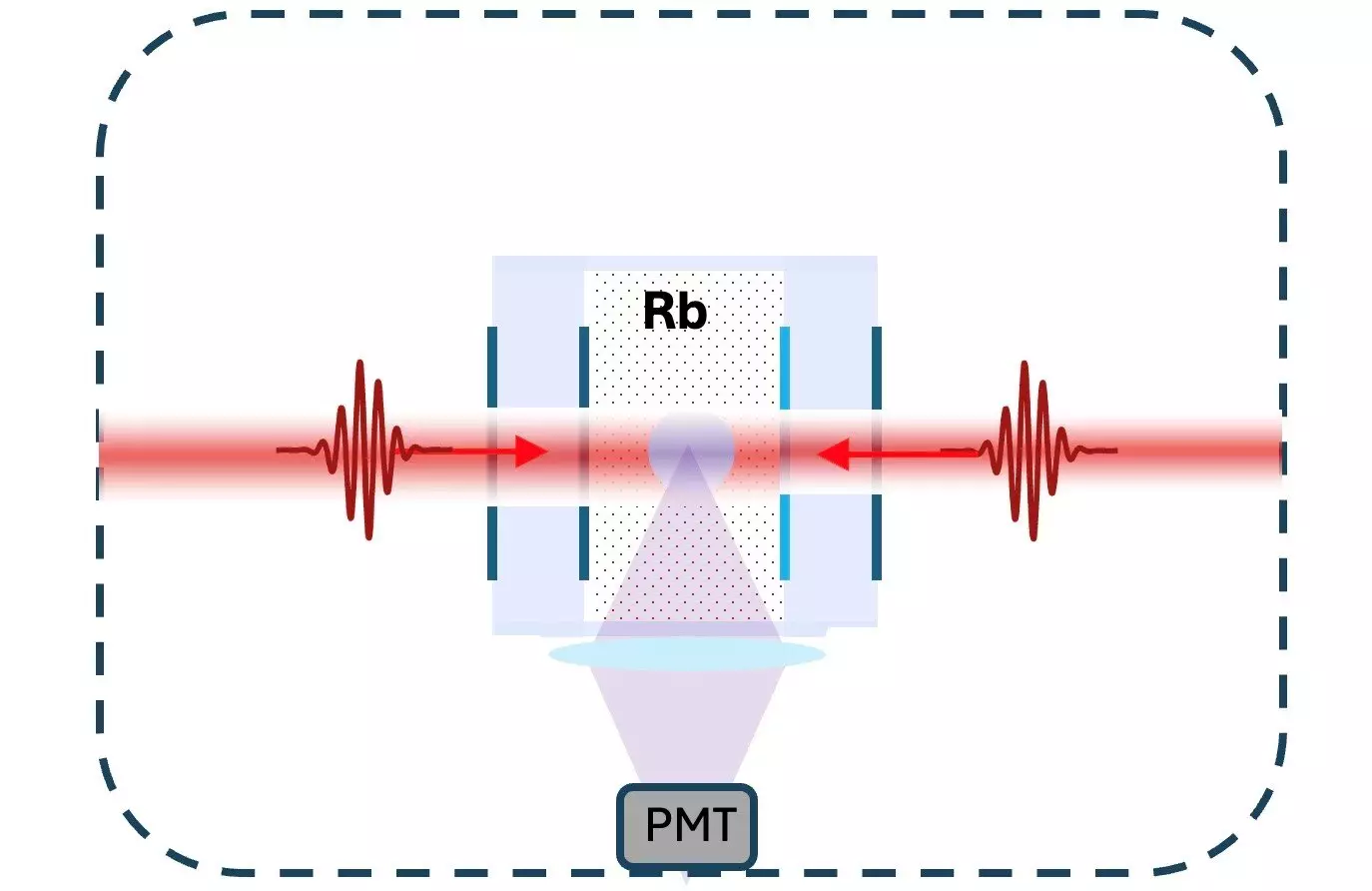In the realm of timekeeping, precision is paramount. Over the years, optical atomic clocks have emerged as one of the most accurate timekeeping devices known to humanity. These advanced systems utilize the intricate behavior of atoms, specifically their energy transitions, to measure time with impeccable precision. A recent breakthrough by researchers from the University of Arizona has pushed the boundaries of what is possible in atomic clock technology, introducing a new design that significantly reduces complexity while maintaining exceptional accuracy.
Historically, atomic clocks have relied on multiple lasers and cryogenic conditions—techniques that enhance precision but also increase the size and complexity of the systems. Traditional setups often fail to meet the demands for real-world applications, primarily due to their bulkiness and sensitivity to environmental factors. Jason Jones, the head of the research team, emphasizes that many of the advancements in atomic clock technology have been confined to laboratory settings. The new clock design, however, moves us closer to practical applications without compromising the accuracy that optical atomic clocks are known for.
The innovative design employs a single frequency comb laser, which not only serves as the clock’s oscillating mechanism but also functions as the timekeeping gearwork. This dual functionality allows the new optical atomic clock to achieve precision comparable to that of traditional clocks utilizing two lasers. The significance of this cannot be overstated, as it paves the way toward creating compact, portable high-performance atomic clocks that could be deployed in everyday environments.
At the heart of this innovation is the use of a frequency comb—a specialized laser that emits a series of evenly spaced frequencies. This technology has transformed the landscape of precision measurement and timekeeping. In a remarkable achievement, Jones and his colleagues reported in the journal *Optics Letters* that their optical atomic clock directly excites rubidium-87 atoms through a two-photon transition. This method leverages the frequency comb to excite atomic states in a manner that compensates for thermal motion, allowing for effective operation even at higher temperatures, specifically around 100°C.
The groundbreaking aspect of this research lies in the clever use of photons emitted in opposite directions. The cancellation of motion-related interference between these photons results in clearer time measurements. By allowing the excited state of the atom to be accessed through the absorption of two photons instead of a single photon, the researchers bypass the need for extreme cooling methods traditionally utilized in precision timekeeping.
The implications of enhanced optical atomic clocks extend far beyond academic interest. The potential enhancements to Global Positioning System (GPS) technology—essential for navigation and various applications—are paramount. As these atomic clocks become more accessible and portable, they promise to improve the precision and reliability of satellite-based timekeeping. Moreover, their incorporation into telecommunications will allow for rapid switching between conversations, significantly increasing data rates and enhancing connectivity for multiple users on shared channels.
These advancements also open the door for implementation in a variety of industries—from telecommunications to consumer electronics—bringing high-precision timekeeping out of laboratories and into homes and businesses. A world where personal devices contain atomic clocks may soon be on the horizon.
The research team is not resting on their laurels. The focus now shifts toward refining the optical atomic clock design to make it smaller, more reliable, and stable over extended periods. The accessible nature of commercial frequency combs, coupled with robust fiber components, greatly supports efforts to streamline the technology for broader applications.
Further research will likely explore additional atomic transitions that can benefit from the direct frequency comb method, potentially unlocking new avenues for precision measurement across various scientific fields. As these innovations continue to evolve, the quest for ever-increasing accuracy in timekeeping remains at the forefront of scientific inquiry.
The introduction of a new optical atomic clock using a single frequency comb laser marks a significant milestone in temporal measurement technology. By eliminating the complexities associated with traditional designs and enabling operation at higher temperatures, the research offers exciting prospects for the future of timekeeping. As these advancements continue to unfold, the horizon looks promising for more practical, accessible, and high-performance atomic clocks that could revolutionize everyday technology and our understanding of time itself.


Leave a Reply